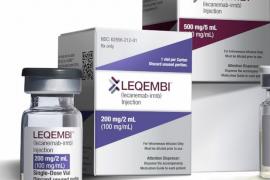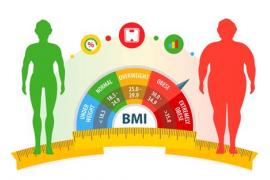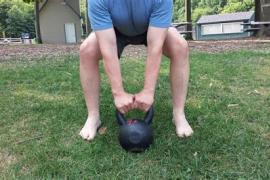
Shin splints — sometimes called medial tibial stress syndrome — are a common exercise-related problem that causes pain along the inner edge of the shinbone (tibia). Typically, the tendons, muscles, and connective tissue become inflamed due to overuse and lead to shin splints.
If you have spent any amount of time walking, running, playing sports, or even dancing, it's likely you've experienced shin splints at least once. In fact, as one of the most common types of injuries for runners and walkers, shin splints are treated more than 3 million times per year in the U.S.
However, if you are new to exercise or have never experienced this type of pain before, you may be wondering if you have shin splints or something else. Keep reading for what causes shin splints, how they are diagnosed, how you can treat the condition, and how to prevent them.
What Do Shin Splints Feel Like?
If you have shin splints, you may experience pain on either side of the shin bone, which may feel like a sharp, radiating pain. Or, your shin splints may cause a dull, achy feeling. Most of the time, the pain occurs or intensifies during weight-bearing activities like walking or running. And, the area is usually painful when touched.
You also may notice that your pain gets worse with exercise, but improves with rest. For this reason, you may have to take a break from your sport — or at least cut back — until your body has time to heal. After two to four weeks of rest, you can slowly resume your exercise regimen if you have no pain.
However, be prepared to potentially be out longer. Some health experts indicate that it can take three to six months for shin splints to completely heal, so be patient with your body and monitor your pain level.
What Causes Shin Splints?
One of the most common causes of shin splints is making a sudden change in your activity level or exercise regimen. The pain results from increasing the intensity, frequency, or the length of your workouts and is particularly common in runners and military trainees.
In fact, military studies indicate that 4% to 10% of military recruits are diagnosed with shin splints during their eight to 12 weeks of basic training. Meanwhile, shin splints also are common among ballet dancers and represent as much as 20% of running injuries.
You also can get shin splints if you exercise with worn out shoes, have flat feet, or wear shoes with poor arch support. Having poor exercise form or tight hip flexors also can eventually lead to shin splints if these issues are not corrected.
Even working out on hard or uneven surfaces can contribute to shin splints. Many runners run the same route every day, which means if there is a slanted road or rough terrain along your route, you could develop shin splints from the repetitive motion. Sports that have frequent starts and stops also can lead to shin pain.
How Are Shin Splints Diagnosed?
When you visit a healthcare provider for your shin pain, they will likely ask you a series of questions like when you feel the pain, how severe the pain is, and if anything makes it feel better. They also will examine your lower leg as well as ask to see you walk and even run.
Sometimes, they will also order additional tests to rule out another issue. For instance, tendonitis can sometimes cause lower leg pain and can be diagnosed with an MRI. Meanwhile, an x-ray or a bone imaging test is used to make sure you do not have a stress fracture causing your pain.
There also is another condition — known as chronic exertional compartment syndrome — that can cause pain similar to shin splits. Though uncommon, this condition occurs when pressure within your muscles builds to high levels when you exercise. Pain usually resolves as soon as your activity stops. If your healthcare provider suspects this condition, a test to measure the pressure in your leg compartments before and after exercise will likely be ordered.
Do Shin Splints Cause Stress Fractures?
A tibial stress fracture may follow shin splints if you continue to train at high rates or even increase your training. That said, some healthcare professionals believe that stress fractures in the tibia also may occur when there is a greater degree new bone formation (known as bone remodeling), which results in temporary bone porosity and weakness.
How to Treat Shin Splints
Because shin splints can potentially take a long time to heal, it is important to be diligent in caring for your lower legs. This starts with resting your body and not pushing yourself to do more. It is also important to see a healthcare provider for a diagnosis.
In some cases, shin pain can be caused by something other than shin splints. If you are diagnosed with shin splints, though, here are some potential treatments your provider may ask you to incorporate into your routine.
Make Rest a Priority
Resting is one of the most important things you can do to heal from shin splints. It allows you to control inflammation and prevent further injury.
At the first sign of discomfort, consider reducing your training volume. In other words, try running or walking shorter distances to reduce the impact on your lower legs. It also can help to vary your route and your activities.
With severe pain, you may need to avoid all repetitive exercise like running for one to two weeks. With your healthcare provider's permission, you might be able to do low-impact activities like swimming, cycling, or using an elliptical as long as they do not cause you any pain.
Incorporate Stretching
Lower-body stretches can be particularly useful — especially if you have tight calves or weaker ankle muscles. Stretching also can help with a tight achilles, which is common in runners.
The posterior leg stretch can be particularly useful in alleviating shin pain and stretching your calf muscle. While lying on the ground with your leg extended in the air, use a towel, resistance band, or yoga strap placed on the ball of your foot to gently stretch your calf and shin area. Hold for 60 seconds and switch sides.
You also can try an anterior leg stretch, which involves standing upright with one leg stretched behind. Place the top of your back foot on the ground and lean forward slightly to stretch the shin. Hold for 60 seconds and then switch sides.
Over-the-Counter Medication
Using over-the-counter (OTC) medications like Advil (Ibuprofen), which are NSAIDs or nonsteroidal anti-inflammatory drugs, also may help temporarily alleviate pain and swelling. But, these medications should not be used without talking to a healthcare provider regarding your symptoms. Not only could you have health conditions that prevent you from taking these drugs, but they also could interfere with your other medications.
Work With a Specialist
If your pain does not resolve or it returns each time you return to activity, you may want to work with a specialist. For instance, it can be helpful to work with a physical therapist for a more tailored treatment plan. They also may be able to address your gait or offer suggestions for improvement.
Additionally, if you have flat feet or high arches, seeing a podiatrist or orthopedic specialist also may be helpful. They can address your foot arch and even fit you for orthotics if that is what is causing your shin splints.
Can You Prevent Shin Splints?
When it comes to shin splints, repetitive use, poor training techniques, improper biomechanics, or a combination of all three are usually to blame. For this reason, it is important to take a multi-pronged approach to preventing shin splints — especially if it is a recurring problem or you are trying to be proactive and prevent a problem before it occurs. Here are some things you can do to prevent developing shin splints.
- Get new shoes: Replacing your shoes is important, especially if you are a runner. After repeated use, they lose some of their support and the tread can wear down. In fact, most experts recommend that you replace your shoes every 200 to 250 miles.
- ACE Physical Therapy and Sports Medicine Institute. Shin splints.
- Start out slowly: Many times, shin splints occur because you have done too much too soon.1 If you are new to exercise or if you are starting a new type of exercise, it is important to start out slow and gradually work toward your goals. This allows your body to adjust.
- Invest in quality shoes: If you log a lot of miles walking or running, you need to be sure you are wearing supportive shoes. This means buying a shoe that fits properly and adapts to your needs. Most specialty running stores know how to fit people who are over-pronators or extreme supinators.
- Consider cross training: For people who are prone to shin splints, you may want to consider incorporating other types of exercise into your routine. For instance, you might try cycling, swimming, pilates, or resistance training rather than doing the same repetitive motions day after day.
- Incorporate foam rolling: Although studies are limited on the preventative effects of foam rolling (or self-myofascial release), there is some research that indicates it could be helpful. It is safe to use a foam roller daily and you can do it before or after you exercise, depending on your preference.
- Consult a specialist: If you tend to pronate, have flat feet, or have an extra long stride, you may benefit from seeing specialist who can help address your issues. This may mean adjusting your gait, or it could mean getting fitted for orthotics. The key is that you find someone to help you address the underlying issues that could be leading to shin splints.
A Quick Review
Whether you are new to exercise or a seasoned veteran, you are at risk of developing shin splints if you do too much too soon. Because shin splints are usually the result of overuse, it is important to start out slowly in order to allow your body to adjust. And if you do develop shin splints, make sure you listen to your body and rest. Trying to push through the pain will likely just result in a more serious injury or extend your recovery time. Instead, take steps to prevent shin splints by incorporating different types of training, varying your routes, and investing in good quality shoes.
source: https://www.health.com/shin-splints-causes-7105979






